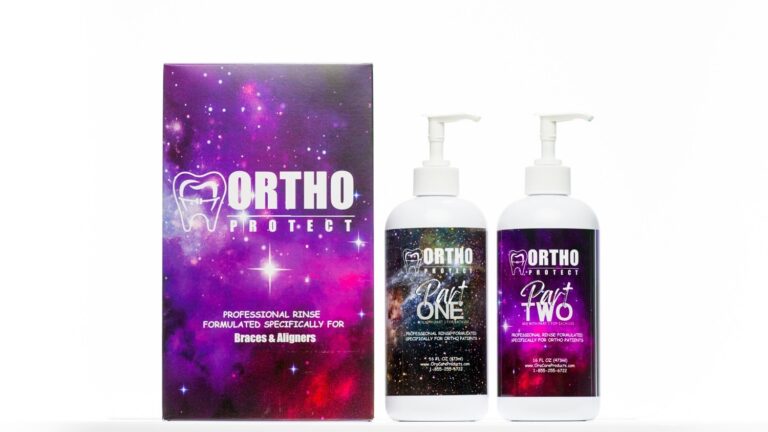Summary: OraCare introduced Ortho Protect, a home care rinse with four key ingredients—chlorine dioxide, poloxamer 407, calcium lactate and xylitol—designed to boost oral health by preventing plaque build-up, strengthening enamel and eliminating harmful bacteria.
Key conclusions:
- Ortho Protect uses chlorine dioxide, poloxamer 407, calcium lactate, and xylitol to target bacteria, enhance remineralization, and reduce plaque buildup.
- The unique formulation of the rinse aims to improve oral care at home, offering a comprehensive approach to dental health for orthodontic patients.
OraCare launched Ortho Protect, a home care rinse designed with compounds that help improve oral care at home and prevent potential problems.
Key ingredients of Ortho Protect
Ortho Protect is a 2-part rinse with 4 main ingredients:
- Chlorine dioxide to kill rot-causing bacteria and dissolve biofilm.
- Poloxamer 407 to create a smooth tooth surface to which plaque is more difficult to adhere.
- Calcium lactate to make the calcium available to the patient’s teeth.
- Xylitol to help remineralize and eliminate bacteria.
Benefits of chlorine dioxide
According to the company, chlorine dioxide can break down the toughest microorganisms and biofilms without corrosive action or negative effects on the oral environment. Its effectiveness is not affected by the state of the environment, especially in terms of pH levels and the presence of organic matter. Chlorine dioxide can kill cavity-causing bacteria that affect orthodontic patients.
Advantages of Poloxamer 407
Poloxamer 407 exhibits bioadhesive properties, meaning that it sticks to biological surfaces such as oral mucosa. According to OraCare, this facilitates prolonged retention of the active substances at the application site, enhancing their effectiveness. For example, Poloxamer 407 ensures that chlorine dioxide remains in the oral cavity longer when mixed with this substance. This helps maximize the effect of chlorine dioxide on oral health.
In addition, poloxamers also reduce surface tension increasing the “spreading and wetting properties” of the products. This creates a “slippery” surface on which plaque has difficulty building, thus minimizing the amount of plaque build-up on tooth surfaces and brackets and wires.
The role of calcium lactate
Calcium lactate is a bioavailable form of calcium that can help remineralize tooth enamel, helping to repair early signs of tooth decay and strengthen teeth, according to OraCare. It works by making more calcium ions available in the mouth, which the enamel can absorb to strengthen and repair the tooth structure. It can also neutralize pH levels and regulate mouth acids to enhance the defensive properties of saliva.
Efficacy of xylitol
Finally, xylitol is a natural sugar alcohol that cannot be metabolized by bacteria commonly found in the mouth, such as Streptococcus mutans. When these bacteria encounter xylitol, they try to consume it as they would regular sugar. However, xylitol disrupts their normal metabolic processes, according to OraCare. It interferes with the bacteria’s ability to produce energy, causing them to starve and inhibit their growth and reproduction.
Because bacteria cannot thrive or multiply in the presence of xylitol, their numbers are reduced and with fewer bacteria, there is less acid production, reducing the risk of enamel erosion.


